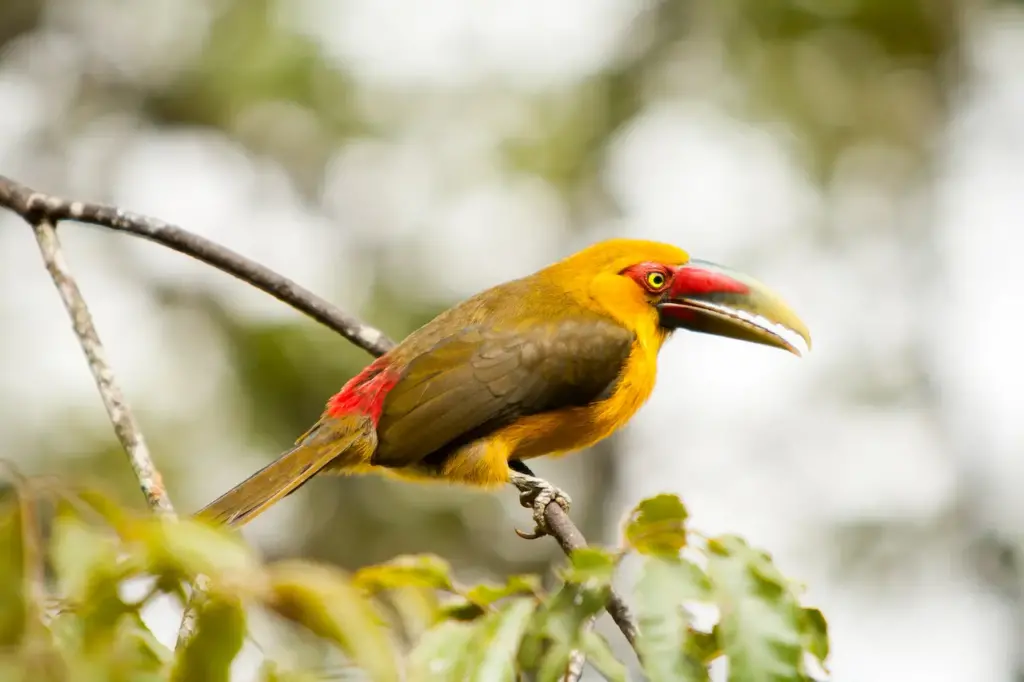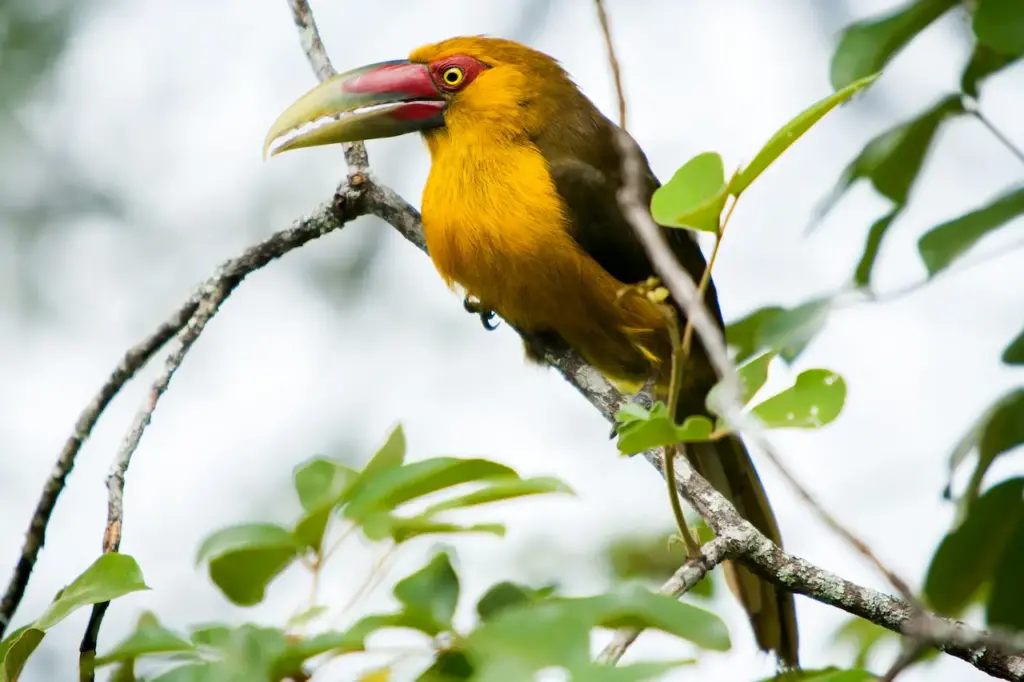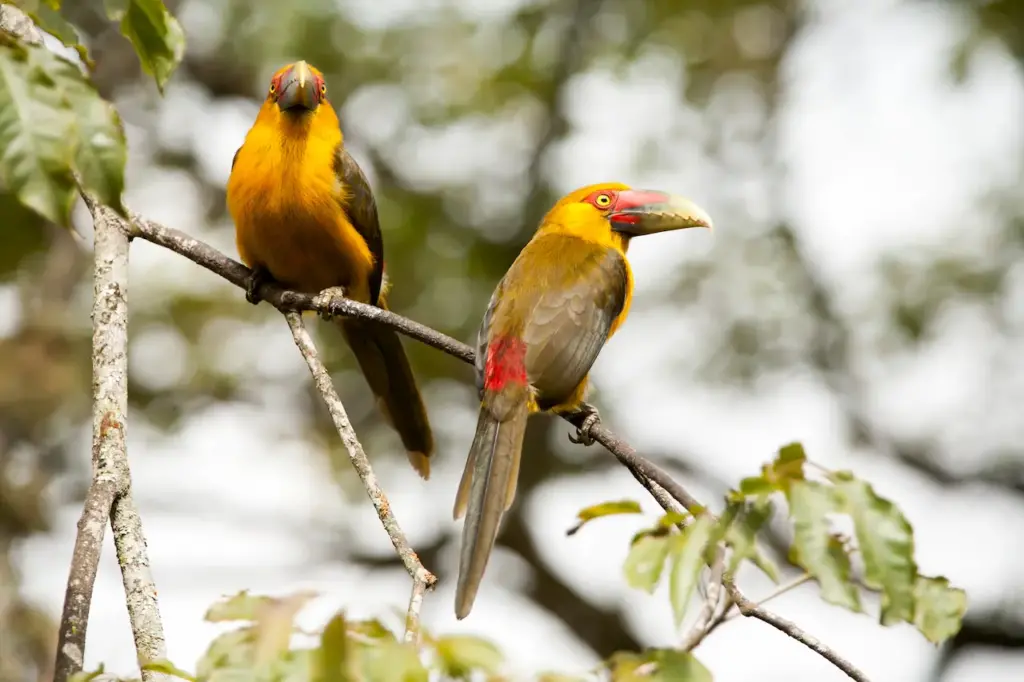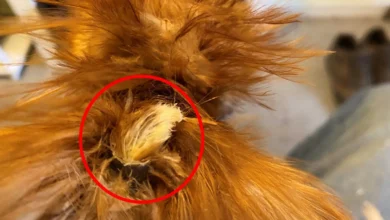The Saffron Toucanets (Pteroglossus bailloni) is a South American Toucan that is found in the Atlantic rain forests in south-eastern Brazil and adjacent areas in far north-eastern Argentina and eastern Paraguay.
In Brazil, they mostly occur in lowland and montane regions (up to 1,550 m or 5,085 feet), generally on slopes and beside streams.
They are most common in Espírito Santo and Minas Gerais to Rio Grande do Sul. They also occur in Pernambuco and have been re-introduced into ex-Guanabara, Rio de Janeiro. Saffron Toucanets are less common in Argentina and Paraguay.

Aracaris generally roost socially throughout the year. Up to five adults and their fledged offspring sleep in the same hole with their long tails folded over their backs.
Even though this species is still fairly common [Stotz et al. (1996)], its numbers are decreasing due to habitat destruction, hunting, and capturing for the pet trade. Therefore, this species is now classified as Near Threatened.
Description
The Saffron Toucanet measures about 35-40 cm (14-16 in) in length, including its long tail.
As suggested by its common name, the plumage is mostly saffron yellow; the back and tail are darker, and more olive in color. The rump is red.
It has a greenish-horn-colored bill with red around the base. The skin around the eye is red and the eyes are a pale yellow.

Reproduction
They typically nest in trees with appropriate hollows, most of which were previously made by woodpeckers. Other hollows are the result of a branch break and ensuing rotting of the heart wood from rain over a period of time..
Both the male and female share the incubation and chick rearing duties. The eggs are incubated for about 16 days.
The newly hatched chicks are blind and naked with short bills and thick pads on their heels to protect them from the rough floor of the nest.

Both parents, as well as their previous offspring and/or possibly other adults, feed the chicks. The young fledge after about 6 weeks. The adults continue to feed them for several weeks after fledging.



